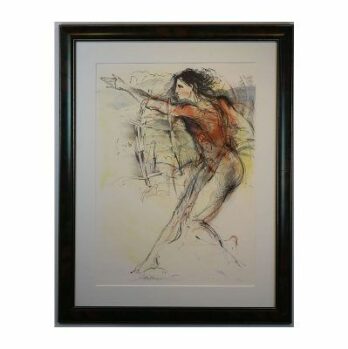Scandinavian Design: The Epitome of Elegance and Simplicity

Introduction:
Scandinavian design has gained worldwide recognition for its distinctive style, characterized by minimalism, functionality, and timeless beauty. It represents a fusion of craftsmanship, innovation, and a deep appreciation for natural materials. In this article, we will explore the essence of Scandinavian design, its various types, popular examples, and the quantitative metrics that highlight its success. Additionally, we will delve into the differences between different forms of Scandinavian design and discuss the historical pros and cons associated with this iconic design movement.
I. An Overview of Scandinavian Design:

Scandinavian design is a design movement originating in the Nordic countries, namely Denmark, Finland, Iceland, Norway, and Sweden. It emerged in the early 20th century as a response to the industrialization of mass production. The designers of this era sought to create products that combined functionality with aesthetics, enriching people’s lives without unnecessary embellishments.
II. Understanding the Essence of Scandinavian Design:
Scandinavian design is characterized by its clean lines, simplicity, and understated elegance. It embraces the use of natural materials such as wood, leather, and textiles, celebrating the beauty of organic forms. Functionality is also crucial, as Scandinavian designers believe that every item should serve a purpose, making daily life more convenient.
a) Types of Scandinavian Design:
Scandinavian design encompasses various disciplines, including furniture design, interior design, fashion, and architecture. Each discipline showcases its unique interpretation of the Scandinavian aesthetic. For example, furniture design often features minimalist pieces with smooth surfaces, while interior design focuses on creating open spaces filled with natural light.
b) Popular Examples of Scandinavian Design:
Some of the most iconic examples of Scandinavian design include furniture by renowned designers such as Hans J. Wegner, Arne Jacobsen, and Alvar Aalto. Their creations, like the elegant ”Wishbone Chair” and the functional ”Egg Chair,” exemplify the perfect balance between form and function. Scandinavian fashion brands like H&M and Acne Studios also embody the minimalist yet chic Scandinavian style.
III. Quantitative Metrics of Scandinavian Design:
The influence of Scandinavian design can be measured by various quantitative metrics. One such metric is the export revenue generated by Scandinavian design companies. According to recent statistics, Scandinavian countries have experienced significant growth in export revenue from design-related industries. This success can be attributed to the global appeal of Scandinavian design and its ability to resonate with people seeking simplicity and quality.
IV. Exploring Different Forms of Scandinavian Design:
a) Nordic Minimalism:
Nordic minimalism is a subcategory of Scandinavian design that emphasizes simplicity and functionality. It often incorporates a monochromatic color palette, clean lines, and an emphasis on light and space. Nordic minimalism has gained popularity for its ability to create serene and uncluttered living environments.
b) Organic Design:
Organic design is another facet of Scandinavian design that celebrates nature-inspired forms. This design philosophy embraces curves, asymmetry, and the use of natural materials. It seeks to bring the beauty of nature into everyday objects, creating a sense of harmony between the man-made and natural world.
c) Scandinavian Modernism:
Scandinavian modernism emerged in the mid-20th century and emphasized the use of new materials, technology, and manufacturing techniques. This form of design showcased a combination of natural materials with sleek, futuristic shapes. It embodied the spirit of progress and innovation while still maintaining a connection to the Scandinavian design philosophy.
V. Historical Perspective: Pros and Cons of Scandinavian Design:
a) Pros:
One significant advantage of Scandinavian design is its timeless appeal. The minimalistic aesthetic and focus on durability ensure that Scandinavian-designed products remain relevant and functional for years to come. Additionally, the emphasis on sustainable materials and production processes aligns with the growing global demand for eco-friendly design solutions.
b) Cons:
Critics argue that Scandinavian design can sometimes appear too sterile or lack ornamentation. The pursuit of simplicity occasionally leads to a loss of warmth and individuality. However, proponents of Scandinavian design argue that its strength lies in its ability to create environments that allow individuals to express their own personality and style without being overwhelmed by unnecessary clutter.
Conclusion:
Scandinavian design continues to captivate individuals worldwide with its unique combination of minimalism, functionality, and timeless elegance. It has successfully evolved with changing times while still remaining true to its core principles. As the global demand for sustainable, aesthetically pleasing design solutions continues to grow, Scandinavian design remains at the forefront, providing a foundation of quality, craftsmanship, and natural beauty.
From the humble origins of the early 20th century to the global phenomenon it is today, Scandinavian design has left an indelible mark on the world of design. Its enduring legacy serves as a testament to the power of simplicity and the harmonious blend of form and function. As we embrace the principles of Scandinavian design, we are reminded to appreciate the beauty in minimalism and to create spaces that enhance our lives while allowing us room for self-expression.











